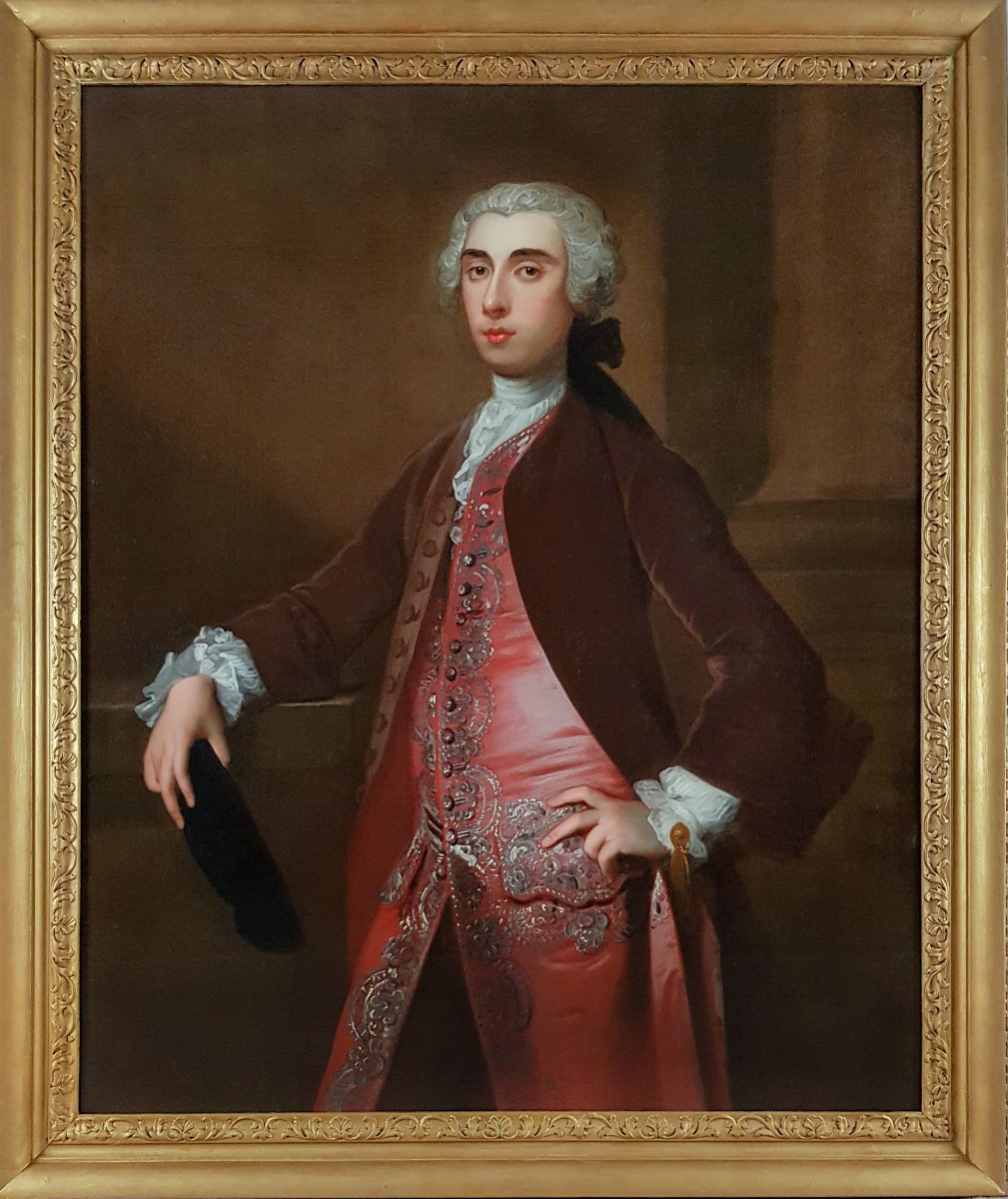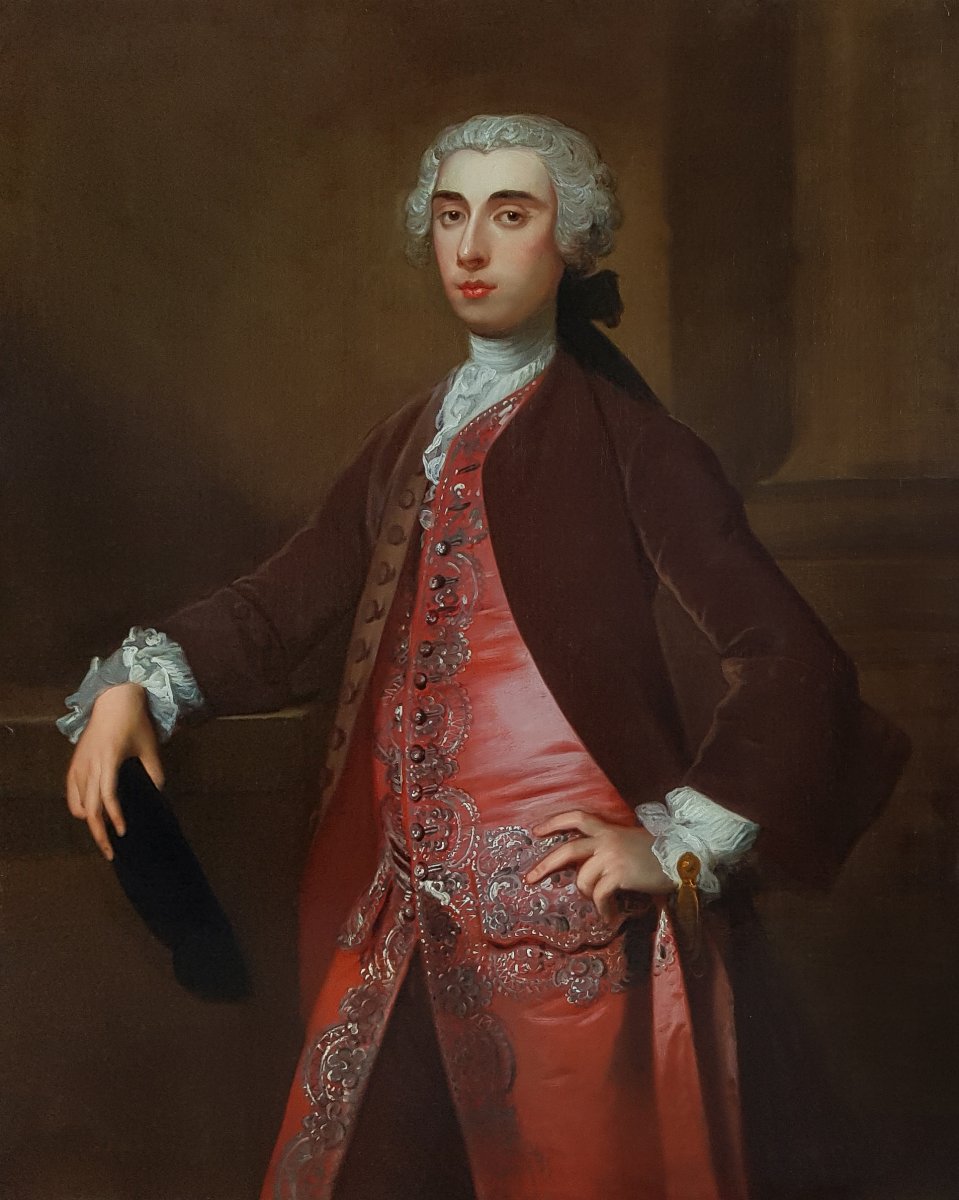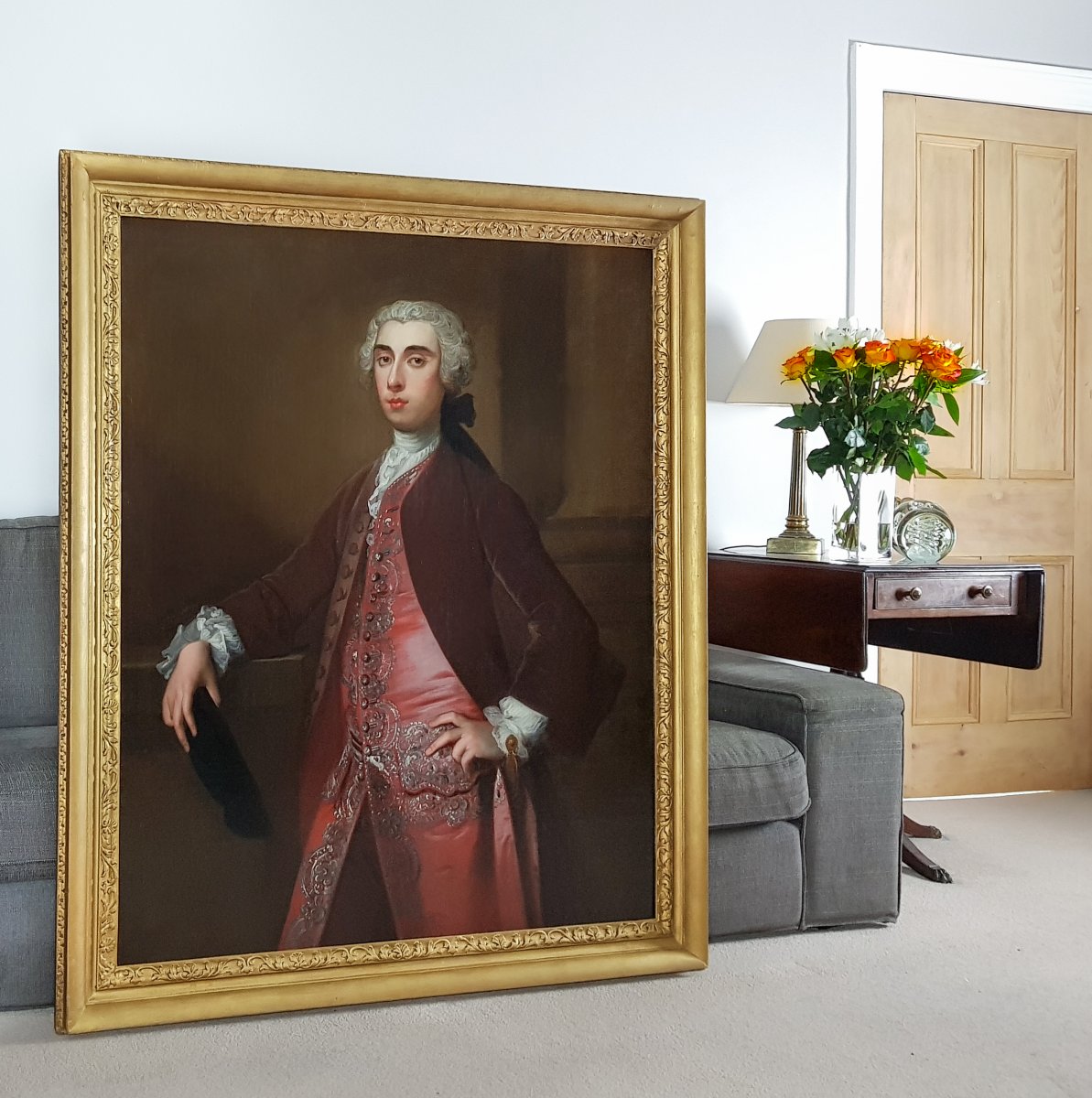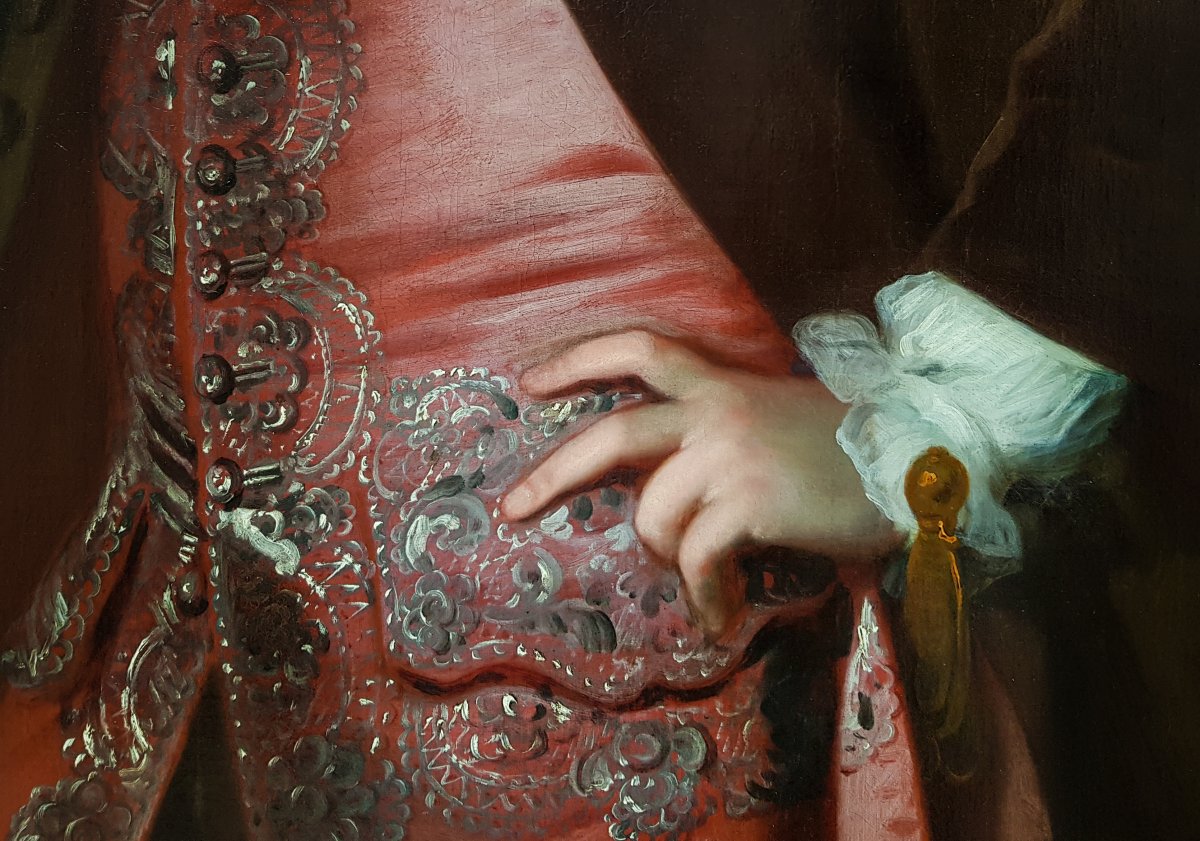"Portrait Of A Gentleman; Studio Or Circle Of Allan Ramsay (1713-1784), Circa 1740"
This striking portrait is an exquisite example of the English 18th century Grand Manner portrait. The sitter is portrayed in a standard gentlemanly pose for the period but it is striking in its study of the sitter’s attitude and in the graceful and natural manner of certain elements. The hands are exquisite as is the lively handling of the cuffs, which have been painted in a free and florid style. The drapery was painted by another artist, as was customary for the period. A specialist drapery painter was employed by almost all the leading British portraitists of the early and mid-18th century and sometimes portraitists employed more than one (the main exceptions were Hogarth and Gainsborough). The most popular and skilled of the draperyman's profession at this time was the Flemish-born Joseph van Aken (c.1699–1749).Van Aken settled in England in about 1720 and worked for Highmore, Hudson, Knapton, Ramsay, Isaac Whood, Hamlet Winstanley, Henry Pickering and others and he earned great wealth. Unfinished pictures were sent to his London studio and via surviving drawings, it is believed that Ramsay provided detailed instructions about how van Aken should pose and dress his figures. Other portraits merely supplied the face – sometimes cut out and tacked to a larger canvas that could be pasted onto the costumed figure. Van Aken had a repertoire of poses and costumes that his clients evidently used as a kind of pattern book. The same features sometimes occur virtually identically in the work of different painters, leading George Vertue to comment in 1743 “Mr Van acken – whose draperys silks satins Velvets, gold & embroideryes which he dos paint for several of them painters extreamly well- and is a great addition to their works and indeed puts them so much on a Level that it’s very difficult to know one hand from another”. By the end of the century such production line methods were falling out of favour and the separate profession of drapery painter was dying out.The sitter’s coat with pink silk waistcoat (pink was worn equally by men and woman) can be dated to c.1740. Pockets on men’s coats and waistcoats were a focus for decoration in the 18th century and the present portrait is no exception, with the silver thread and foils embellishing both the pocket flap and all around it, as well as the front edges. The luxurious silk waistcoat would have been worn for formal evenings or occasions such as going to the theatre or the opera. Lace was also an important accessory for men in the 18th century; here it is worn around the cuffs of the shirt and down its front opening, known as a ‘bosom ruffle’.There was a strong desire to acquire French fashions and the English went to great efforts. For most of the 18th century there were heavy duties and sometimes outright bans were imposed on the import of French silks and laces in order to protect the British textile industries. Despite this the smuggling of these goods was endemic through all levels of English society.Allan Ramsay (1713-1784) was a Scottish painter, active mainly in London, where he was the outstanding portraitist from about 1740 to the rise of Reynolds in the mid-1750s (he also maintained a studio in Edinburgh for several years). He studied in Edinburgh and London, and then from 1736 to 1738 in Italy and when he returned to London he had a much more elegant and sophisticated style than any of the established portraitists such as Thomas Hudson.Ramsay can be viewed as the principle creator of the new informal style in English portraiture which in the years of the 18th century replaced the older tradition founded by Kneller. Ramsay was a painter of a remarkably broad European culture. He received his chief training in Italy and he is a unique figure in his devotion to drawing among British portrait painters of his time. He is widely credited as having launched portraiture in the ‘grand manner’ and is credited as virtually the only 18th century English portrait painter genuinely working in the ‘European manner’. He was preferred to Reynolds by the royal family and in 1767 was appointed principal painter to George III. However, he gave up painting in 1773 after injuring his arm in a fall. He was a member of the group of artists including Hogarth, Thomas Hudson, Francis Hayman and the sculptor John Michael Rysbrack who met at Old Slaughter's Coffee House in the mid-1740s and who promoted the Foundling Hospital as the first public exhibiting space for artists in London.Provenance: Curzon Park
Measurements: Height 142cm, Width 120cm framed (Height 56”, Width 47.25” framed)





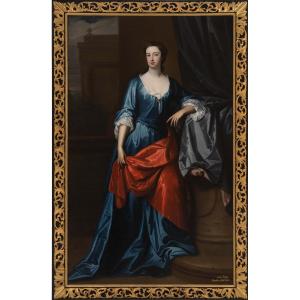
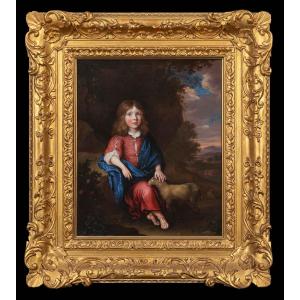



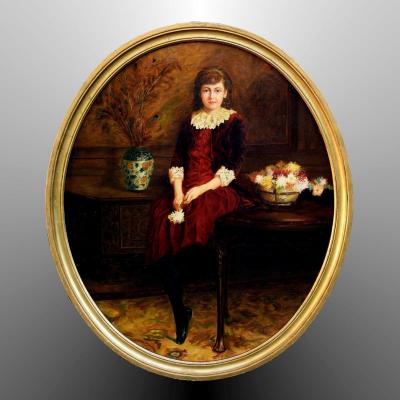
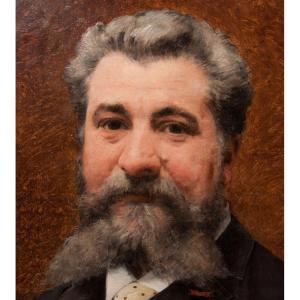
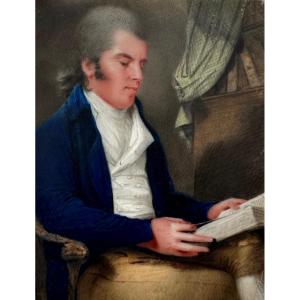


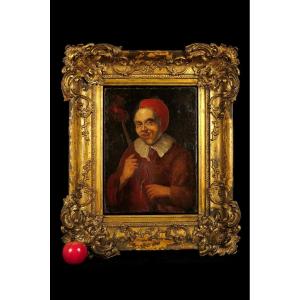




 Le Magazine
Le Magazine Rivista Artiquariato
Rivista Artiquariato TRÉSORS magazine
TRÉSORS magazine
